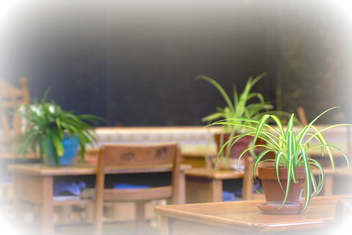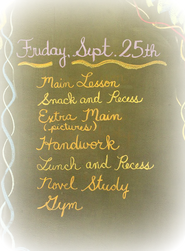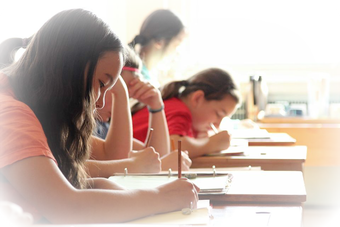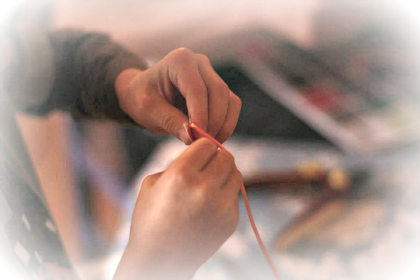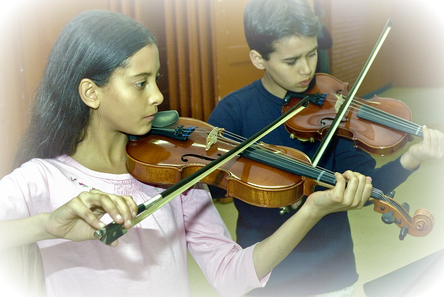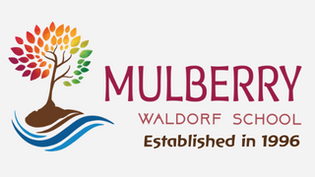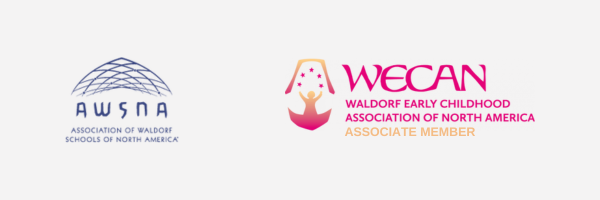Grade School at Mulberry
|
Inspired most deeply through their feelings, Grade School students respond powerfully to what is beautiful in the world, this feeling for beauty is cultivated by the tools and approaches used in their main lesson work. Learn more about our Grades 1-5 and 6-8 curriculum.
The morning begins with music and verse and then moves into a two-hour main lesson. Each main lesson block is a deep immersion in a particular academic subject including fine arts, science, mathematics, humanities, language arts, and languages. The block, lasting three or four weeks, is shaped and enlivened by the teacher through music, poetry, painting, drawing, movement and drama. This allows the whole child to become absorbed in the subject matter: head, heart and hands. This approach also allows for freshness and enthusiasm, and a concentrated, in-depth experience with each subject area as well as time for integration and reflection before the subjects are reviewed.
|
When our students reach Grade One, they are given a plant.
They water them and watch them grow. Just as these plants grow and change, so do the children. |
|
The class teacher delivers the main academic subjects, coordinates with specialty teachers, and provides the link between home and school. The class teacher encourages mutual respect, love and understanding; and strives for a deep recognition of each student’s individual needs, which helps to develop their full potential.
As a vital part of learning, the students create their own workbooks for each subject, recording and illustrating the substance of the teacher's research and presentation. These books are an important way in which art is integrated into every subject. These colourful, very individualized books reflect the progress of each student and are not only a record of what has been studied, but a method of inquiry, increasing the students’ capacities for creativity and for knowledge. They are a unique and vital part of Waldorf education. |
Grade School Main Lesson
|
Fine Arts
Fine arts, including drama, painting, music, drawing and sculpting are integrated into all subjects, including mathematics and the sciences. The Waldorf method of integrating the arts throughout the curriculum awakens imagination, and creative and flexible thinking, which brings vitality and wholeness to learning. Science Science is taught experientially. The teacher sets up an experiment, then calls upon the students to observe and discuss their findings so that they can understand the underlying scientific principles. This process cultivates observation skills, inquiry, and critical thinking. The sciences begin with Nature Studies in the early grades and then move to more challenging subjects such as zoology, botany, chemistry, astronomy, physiology, and physics. |
|
|
|
Mathematics
In the lower grades, mathematics is introduced through stories, art, song, and movement. Number bonds, the four processes, number problems, and place value are practiced daily using manipulatives and movement. Students progress to multiplication tables, word problems, measurement, time, and money. Fractions, long division, rounding, and decimals are introduced and mental arithmetic and games are continued to help strengthen skills. In middle school, students learn business math, geometry, and algebra to build analytical and critical thinking in preparation for high school. A gentle start with a strong finish! Humanities The humanities curriculum begins in Preschool and is developed through the use of great stories of the world which reflects a diversity of cultures and the evolution of humanity. The stories selected at each grade reflect the specific stage of child development and serve as a guide for age appropriate striving and sense of purpose. The humanities curriculum begins in Preschool and Kindergarten with fairy tales and stories from around the world. Grade School students are immersed in fables, as well as Indigenous legends, Old Testament stories, and Norse and Greek mythologies. These students travel through the full sweep of the world’s cultural heritage, from studying ancient Roman and Greek cultures, to learning about North and South American, Asian, European, Middle Eastern, and African cultures, geography, and history. By experiencing these cultures through their legends, literature, architecture, music, inventions, and art, our students gain a deep understanding and appreciation for the rich diversity of humankind. Language Arts In our Early Childhood programs, children develop a rich oral vocabulary through stories, songs, games, and poems. Special attention is given to the development of fine motor skills through activities such as lacing, finger knitting and sewing. In the Grade School, topics, such as letters of the alphabet in Grade 1, are introduced through engaging stories and beautiful art. Learning to read and write is accompanied by daily phonetic work in songs, poems, and games that help to establish a joyful, living experience of the language. Progressive development in language arts is built through a myriad of grammar, spelling, poetry, creative writing, drama, research skills, and diverse literature. |
